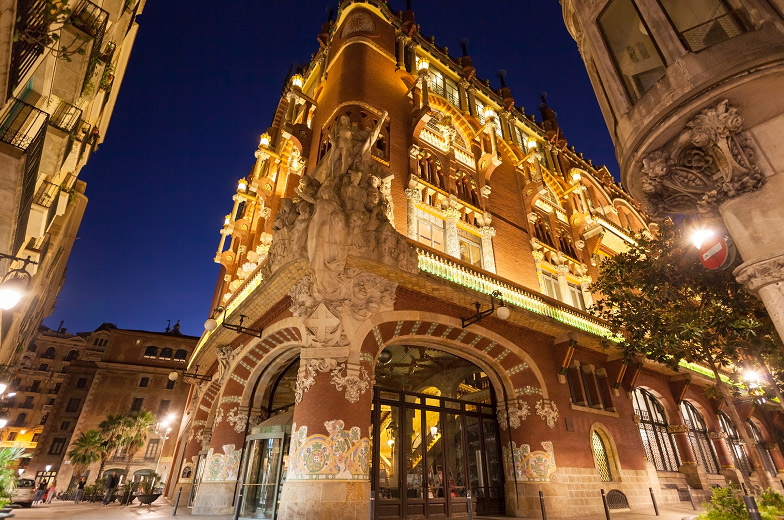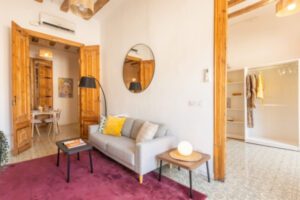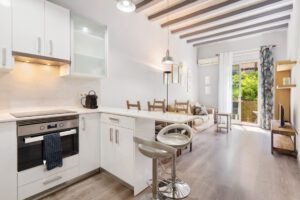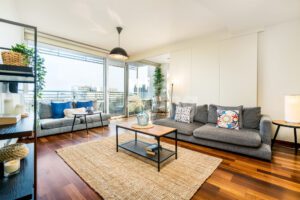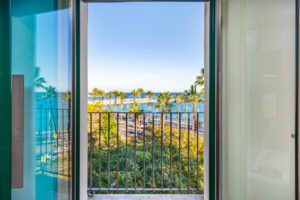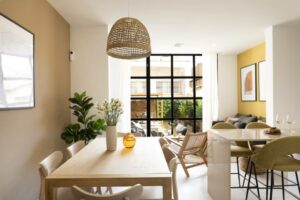Barcelona is an incredible tourism city. Between the beach, the hills, the modernist architecture, the Roman ruins and an incredible number of restaurants and bars, tourists have enough to keep them busy for years.
“But, wait!” you may say, “The guests who stay in my holiday flat in Barcelona aren’t your typical tourists.” And it’s true. As the owner of a tourism flat, you know that your customers tend to be savvy travelers, eschewing expensive hotels and places like the Sagrada Familia in order to have a more authentic travel experience.
So when you’re engaged in the management of holiday apartments and you want to serve the interests of your special guests, where do you send them? Below we offer up five great places in Barcelona that bridge the gap between touristy and local, and where you’re just as likely to run into a Barcelona citizen as you are a visitor from Sweden.
La Caseta del Migdia
Montjuic is one of the true wonders of Barcelona, and truth be told, an entire post could be written about the many interesting sights and places to visit on this mountain at the city’s southwestern extreme. But the Caseta del Migdia offers a little of the best of everything Barcelona has to offer: an outdoor bar, stunning views of the city and sea, lounge chairs, cooling pine forests, grilled meat that you can order from the barbecue, and chill music playing in the background. To arrive, you’ll need to take the footpath that goes around the sea side of the castle at the top of Montjuic, or follow the signs and winding road that heads towards the castle from the top of the funicular. In autumn and winter it’s open from noon ’til sunset Saturdays and Sundays, and in spring and summer the hours are extended.
Can Paixano
There are many bars in Barcelona, but few have the charm, the grit, and the old-school flavor of Can Paixano. This tapas and wine bar is heaven for those who like to rub elbows with, well, everyone, the place getting so packed by midday that you sometimes are unable to squeeze in or out. If you do manage to implant yourself within shouting distance of one of the staff, who, incredibly, write down nothing and remember everything, you’ll need to order a bottle of cava and a greasy sandwich straight off the grill. Whatever qualms you may have will dissipate when you realize that you are not only allowed but encouraged to throw your sandwich wrapper on the floor when you’re done. At the back, the owners, who have been producing cava for more than 40 years, have a little bodega where you can buy bottles and canned goods to take home. And if you really can’t stand the crowds, get there at 9am when it opens and enjoy a vermouth from a stool at the bar like a good Barceloneta local.
Mon-Sat, 9h – 22:30h
Carrer de la Reina Cristina, 7
Platja de l’Eixample
If the guests in your tourism apartment have kids, you know that some concessions will have to be made in terms of activities. Tots are not likely to want to spend their entire day wandering endlessly around the city. So if they’re here on a day in the summer and looking for a low-key venture for the little ones, have them head to the Jardins de la Torre de les Aigües in the Eixample neighborhood. This area in the interior of one of the typical Eixample neighborhood blocks has been converted into a mini beach for little ones, with a wading pool that’s a welcome refreshment in the hotter months, and loads of sand for them to play in. If your guests don’t feel like making the trek all the way down to the real beach, it’s a good compromise. From the street, walk through the passageway to buy your tickets. Open from 10h-20:30h from June 25th to September 9th.
Entry: €1.60
Carrer de Roger de Lluria, 56
Church of Sant Pau de Camp
If your guests are history buffs, this is one destination they’ll want to have on their list. Sant Pau de Camp, often overlooked in the rush to see the Cathedral, the Sagrada Familia, and Santa Maria del Mar, is actually the oldest church in Barcelona. It was built by the Benedictines in the 10th century, then rebuilt again in the 11th and 12th centuries. It’s remarkable not only for its state of preservation and for being a rare example of Romanesque architecture in Catalonia, but also because of its starkly urban surroundings in present-day Barcelona. Sant Pau de Camp sits squarely in the middle of the Raval neighborhood, a great place to spend the rest of your evening wandering, dining and bar-hopping. A two-for-one excursion. What could be better?
Carrer de Sant Pau, 99
El Mercat del Born
We could spend all day bemoaning the fact that mom-and-pop stores have been overrun by supermarkets, but Barcelona has tried to maintain at least some of its traditions when it comes to where we buy our food. The city has put a lot of money and time into supporting the neighborhood markets, and we’re not just talking about the very famous Boqueria. Major restoration projects have also been carried out on two of the city’s most gorgeous iron structures, the Mercat de Sant Antoni and the Mercat del Born, both designed by modernist architect Antoni Rovira i Trias. When construction work began in 2002 to install a library on the site, extensive archaeological ruins were discovered below ground, and it was decided to preserve the area and open it as a museum and public space. For an interesting glimpse into what the city streets once looked like, don’t miss this walkthrough.
Plaça Comercial, 12
